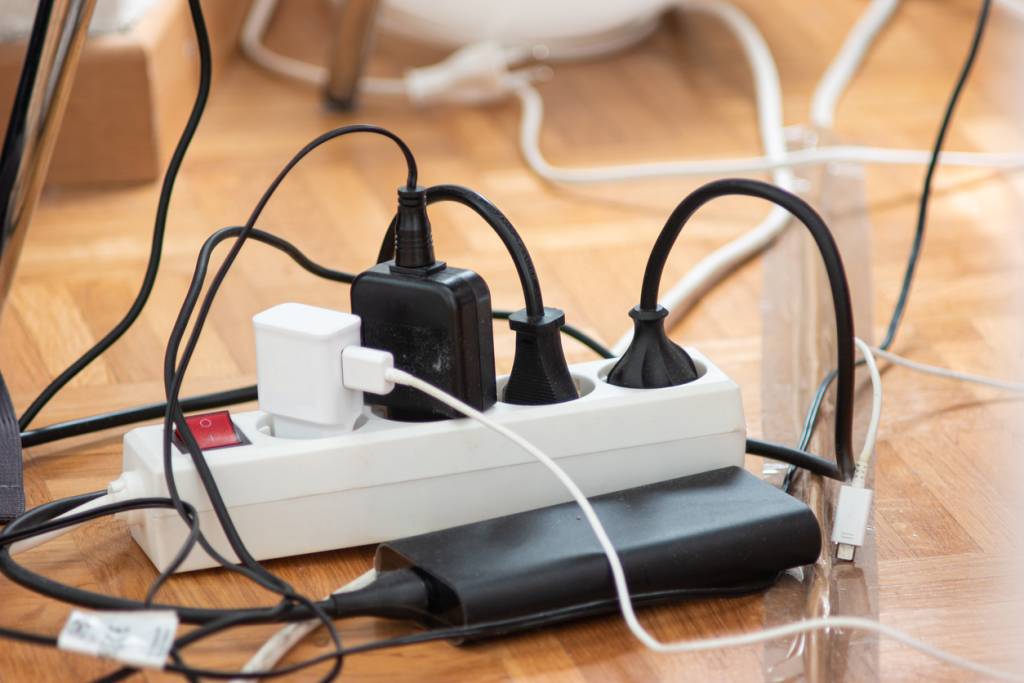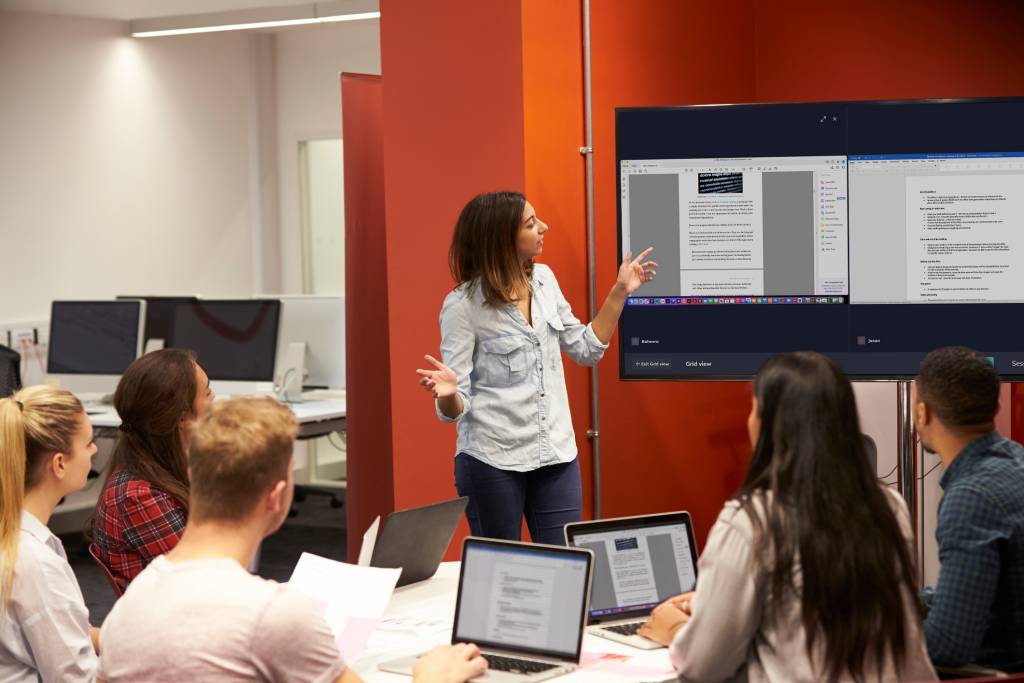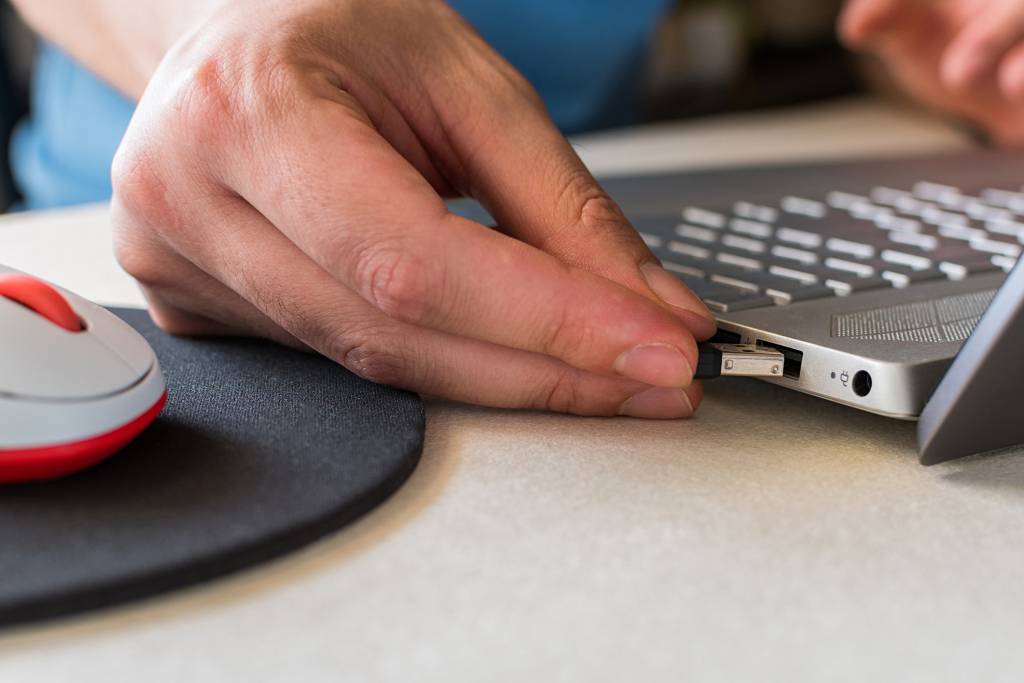
It’s time to eliminate HDMI cables in the classroom and go wireless!
What you’ll learn in this article:
• Technological advancements and teaching
• Why HDMI cables are less relevant in the modern classroom
• The benefits of going wireless

The modern classroom has undergone significant changes in the last 10 years. Traditional teaching tools like whiteboards and chalk have rapidly been replaced by smart boards, tablets, and apps as teachers and students switch to online methods of creating lessons and producing work.
Given the rapid pace of technological advancement, we’re also finding that some digital tools are being replaced by more streamlined and interactive alternatives – HDMI cables being one example. In this article, we’re going to look at how lesson delivery changed and how HDMI cables have become less relevant in the modern classroom.
The evolving landscape
Gone are the days when the teacher stood at the top of the classroom with a piece of chalk in hand, presenting without the help of PowerPoint, videos, or online diagrams to explain difficult topics and keep students engaged.
With the rise of smartphones and the increased availability of devices, the way children learn and the way they want to learn have completely changed.
It doesn’t come as a surprise that the education system has undergone changes to reflect the digital landscape. Many students have never known a world without the internet or technology, so it’s fitting to use tools that are both familiar and engaging when it comes to teaching.
According to Technology and Education Reform, the most common effect of introducing technology tools to students is an increase in motivation.
Technology continues to push educational potential to new levels. It provides students with quick access to knowledge, learning enhancement tools, and fun opportunities to put what they’ve learned into practice. It also allows them to delve deeper into difficult concepts and explore new ideas and subjects – often at their own pace.
If we look at where educational methods and tools have come from to where they are going (particularly in light of the pandemic), the significance of technology in the classroom is clearer than ever. Digital content dominates, and classrooms need to facilitate this.

The hassle of HDMIs
What is an HDMI cable? HDMI stands for high-definition multimedia interface, and it refers to something that connects your device to a larger display in order to share the content that’s on your screen.

Some of the drawbacks of HDMI cables in the classroom:
1. Restricted mobility
HDMI cables often landlock teachers to their desks. As a teacher, you know how essential it is to walk around the classroom to interact with students – to monitor their progress and give feedback. When your mobility is restricted, it makes it difficult to stay connected to your students.
2. Cable clutter
HDMIs add clutter to the classroom – which can pose a real tripping hazard, especially if you have younger students in the classroom.
3. Misplaced, broken, or stolen HDMI cables
With teachers and students coming and going between classrooms throughout the day, it’s very easy for HDMI leads to go missing or get damaged. Searching for a misplaced HDMI lead at the start of the lesson is time-consuming, and constantly replacing leads can be costly – going wireless prevents all of this.
4. Students can’t share their screens
With an HDMI cable, students can’t share their screen with the rest of the class – only the teacher can. This can make for more passive lessons where students feel less involved and less engaged.
What is wireless screen sharing?
Screen sharing is a way to show your exact desktop, laptop, phone, or tablet screen (or an application window of the screen) on displays in other locations. You generally share a window of activity with your audience, for example, a Chrome browser.
The benefits of wireless screen sharing
PCs, tablets, and mobile devices have become commonplace in many classrooms. Students are more digitally literate and connected than ever, in fact, they tend to be the most confident when it comes creating content digitally. It makes sense, then, to leverage this appetite for tech to boost students’ learning experience.
By adding wireless screen sharing solutions like Montage to the classroom, your students have the ability to share their work back to the front of the classroom. This creates a more dynamic classroom where students can both receive and contribute knowledge to the lesson.

Here’s a few more benefits of wireless screen sharing in the classroom:
1. Increased collaboration
Wireless screen sharing allows students to make their thinking visible for the rest of the class. Introverted students may find it easier to collaborate with their peers by screen sharing from their desk, opposed to having to stand at the front of the room to present.
2. More equity
Not only does it give students the ability to make their thinking visible, but it opens the classroom up, creating a more active learning environment where students’ voices are heard.
3. Better engagement
Students are generally more motivated to stay on task when they are aware that they can potentially be called upon to share their screen with the class.
4. More mobility
There are no wires or cables restricting your movement in the classroom, which means you can teach from anywhere in the room, keeping you more connected with your students. Wireless presentation keeps lessons mobile and engaging.
5. Safe and secure
With the option for local-only sessions, wireless screen sharing is just as secure as using a cable. A unique session ID means that only those in the classroom can join the session.
Plus, with Montage’s Moderator Mode – you stay in control of who shares their screen, keeping students focused on the lesson.
6. Dynamic lessons
Wireless screen sharing allows you to interact with the lesson material on the screen. In fact, with Montage’s built-in tools you can add annotations to draw attention to particular points and engage with the material more directly.
Discover the benefits of wireless screen sharing with DisplayNote Montage
Made for the classroom, Montage is a wireless screen sharing tool that lets you share your content to the main display. Whether it’s a video, presentation, document, or webpage – Montage makes it easy for teachers and students to wirelessly screen their share from any device. The software is installed on a windows device that is connected to an interactive whiteboard, TV, or projector.
The mobility you get with wireless presenting makes teaching more dynamic; the teacher can now be anywhere in the room with their device. This gives proximity to students at the back, which keeps all the students engaged with what the teacher is saying and doing.
Esteban Nunez, IT Director and Teacher, St. Bonaventure Catholic School, Florida
When a teacher joins the classes from the perspective of the student, it gives a sense of the teacher participating at the same level as the student.
Discover better wireless screen sharing for the classroom
Try Montage for yourself
Want to stay in the loop?
Keep up-to-date with everything DisplayNote – including new releases, job openings, and customer giveaways.
Don’t worry, we’ll not spam you and we’ll never share your email with anyone










